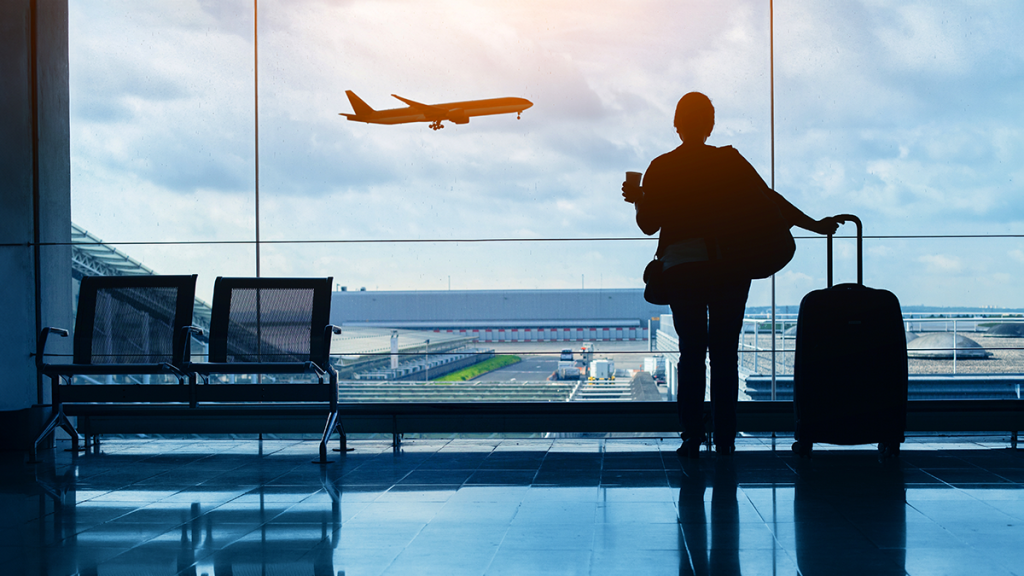How COVID-19 changed the way we travel
This story is portion of The Highway Forward, a collection that examines the potential of travel and how we’ll practical experience the world after the pandemic.
For the past many decades, the world has felt more and more obtainable. In the 1990s, led by RyanAir and EasyJet, small-price tag airways commenced turning second-tier airports into jumping-off points for cheap global explorations. The 2000s ushered in the details-and-miles credit card era, transforming workaday street warriors into entire world-savvy jetsetters. In 2008, Airbnb introduced, earning it probable for vacationers to “belong anywhere” even though sleeping affordably in the houses of locals. And then Instagram arrived, followed by selfie adhere-wielding influencers who obsessively mapped the globe’s most lovely coves, peaks, villages, and beach locations, inviting other people to observe.
By December 2019, if you had time and disposable earnings, the world’s concealed corners had been a lot more or a lot less obtainable to you, for superior and worse. Tourists can carry income and fresh new strength to a location, but they can also like it to demise, as places like Venice and Machu Picchu know all way too very well.
That all altered, of program, past year, when the environment went on lockdown. Air travel dropped 60% globally, in accordance to the Worldwide Civil Aviation Group. Resort occupancy in the United States was down 33% from 2019. Global tourist arrivals throughout the world, which experienced attained 1.5 billion in 2019, in accordance to the UN Planet Tourism Group, plummeted 74% to just 381 million. The corporation estimates the loss in international tourism receipts due to COVID-19 to be $1.3 trillion, putting at immediate danger up to 120 million tourism jobs—and a large selection of ancillary kinds. When the planet stops touring, the repercussions are enormous.
As vaccinations roll out across the United States and other elements of the planet, Americans are poised to start off touring once more. But, as we explore in this package, how we travel and wherever we go will not be the same. And the destinations we stop by will be inexorably altered.
The plan of digital nomadism—setting up a virtual workplace from just about anywhere—has been well-known in the far more wanderlust-stuffed corners of the travel world for the previous 10 years. But when places of work closed very last yr, the pipe desire became a possibility for many. Right after struggling by way of a spring that CEO Brian Chesky described to Speedy Business executive editor Benjamin Landy as driving 100 miles an hour then hitting the brakes (“There’s no secure way to do that. Items are likely to break”), Airbnb leaned into the forms of rustic retreats and more time-time period stays that appeal to nouveau nomads. It ended the 12 months with a file-breaking IPO that has built it the most precious hospitality company in the world. Chesky now sees international nomadism—a earth where men and women can get the job done from any home—as crucial to the upcoming.
He’s not by itself. Destinations from Estonia to Barbados have been introducing lengthy-expression vacation visas to entice freshly remote employees and revive nearby economies that have decimated without conventional tourism. Hotel organizations, as perfectly, are embracing nomads by introducing new prolonged-time period keep homes and goods aimed at vacationers who want to handle hotels much more like homes. The craze is possible below to remain. According to a Fast Enterprise-Harris poll of 1,105 individuals throughout a spectrum of money brackets, 57% of individuals plan to journey out of city whilst performing remotely when COVID-19 limits are lifted.
When international borders shut, domestic vacation also arrived into the highlight. For People in america, that has meant a renewed—or potentially entirely new—interest in the terrific outside. In North The united states, there were five periods as many initial-time campers final calendar year than the 12 months just before, according to the personal campground firm KOA. Certainly, just one of the few bright places in the travel sector around the previous 12 months has been corporations aimed at tenting and glamping. Camping booking system Hipcamp became a boon to the landowners that list their properties on the internet site, while #vanlife startups Cabana and Kibbo discovered traction amid the disaster. And Getaway, a lodge firm that rents cabins in the woods outdoors key metropolitan spots, reported an occupancy price of 99% in 2020—unheard of for most resorts, even in the ideal of situations.
The fate of some forms of journey stays unclear. Industry watchers are bullish that small business journey will return in some sort, even with Bill Gates’s prediction last November that a lot more than 50% of this kind of excursions will be removed in the publish-pandemic environment. But businesses are employing this prospect to reassess how they deploy employees, alongside with both of those the economic and carbon footprint of company journey. Prior to the pandemic, carbon emissions from aviation, nevertheless only 2% of over-all world-wide emissions, were growing faster than predicted by the United Nations: by 23% from 2013 to 2018. A 2020 review located that 50% of all those emissions are concentrated among the just 1% of the world’s populace: the super travelers, who involve a lot of company highway warriors.
Arguably the most urgent problem mark of all hangs over those further-flung locations that have usually relied pretty much exclusively on global journey: locations like Peru, Kenya, Fiji, Thailand. Even even though lots of global borders are now open up to Us residents, the U.S. Condition Section at this time has Do Not Vacation advisories for 80% of the world’s nations around the world, most of them owing to the continuing spread of COVID-19—and absence of vaccine penetration—in these places.
Destinations that are blessed with the form of natural splendor that attracts superior-paying out vacationers from all around the globe are now riding on fumes economically. The Indonesian island of Bali, in specific, usually takes in an approximated 53% of its revenue from tourism, according to the UN World Tourism Firm. In the next quarter of 2020, 90% of the island’s excursions and travel companies experienced shut, and many of the resorts that remained opened had been operating at fewer than 10% occupancy. The ripple outcomes from this have been profound: unemployment and a return to subsistence farming on an island that experienced previously held the promise of upward mobility.
Indonesia’s borders continue being shut, though the country is reportedly considering enabling worldwide tourist
s to go to Bali by the stop of July. A lot of resort standard supervisors remain skeptical that they’ll see any important return of intercontinental site visitors until eventually 2022.
Intercontinental tourists will inevitably return to Bali—and the rest of the environment. We will get back again on planes, sleep in inns and other people’s households, mingle with locals in places to eat and bars. We will hoard our points and miles and publish about our adventures on social media.
But we will never see the entire world in rather the similar way again.




